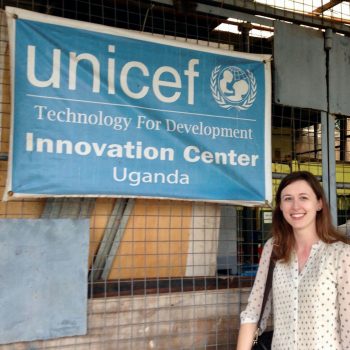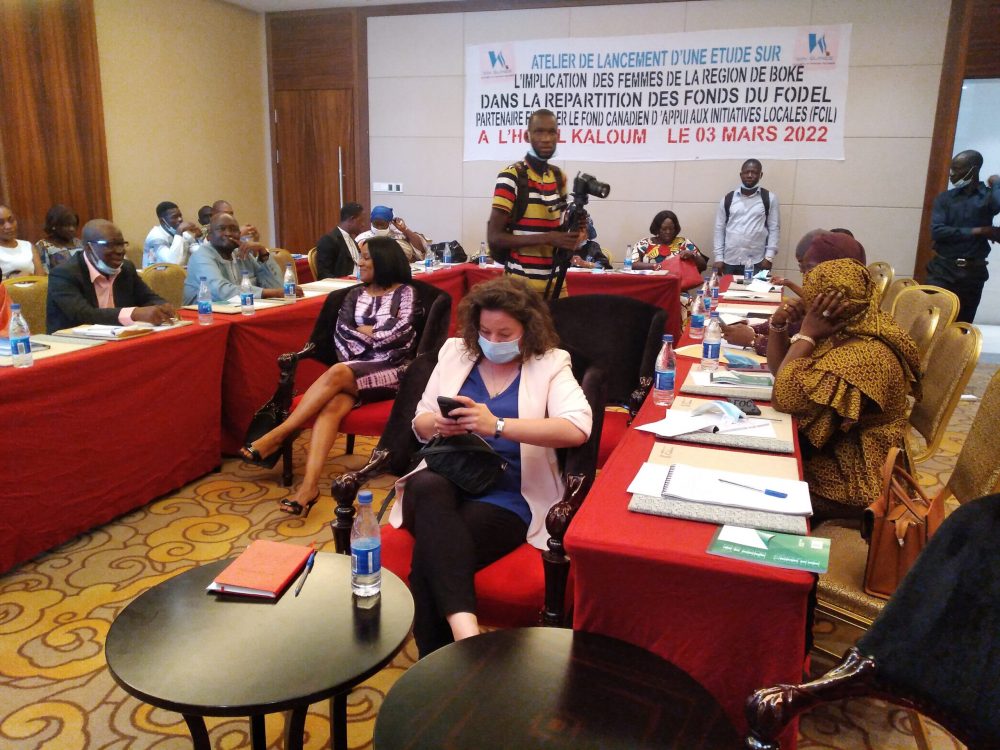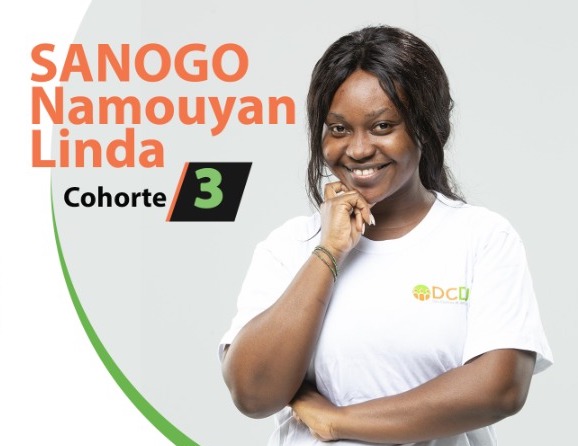How DG Brought a Gender Data Approach to Our Least-Likely Projects — and Beyond
Martha Staid started at Development Gateway as a Senior Associate in 2014, and now serves as Director of Operations. In her role, Martha supports the work of DG’s project managers and researchers, working to ensure each project team has the right people and processes to drive data use. She has a background working on women and technology, and has led DG’s work on visualizing gender data, including the PREMAND and Countdown to 2030 dashboards.
The Early Days of Gender & Development

Once upon a time, a prevailing attitude in international development work was that projects did not need to focus on gender issues explicitly because “a rising tide lifts all boats” — that is, reducing poverty was the important goal, because women would be equally impacted by any improvement in wealth or resources.
We have long since agreed this is not true. As in all societies, built-in systems reinforce existing inequalities, like who has access to jobs, who controls household income, who eats first, whose education is prioritized and who drops out of school to care for family members. Unless interventions explicitly target a marginalized population — women and girls, ethnic minorities, the ultra-poor, etc — and actively seek to address the factors disadvantaging them, they are unlikely to see the same impact as the more powerful members of society. Put more succinctly, gender-blind is not gender neutral.
(While the examples below focus on self-identified women, gender is, of course, not a fixed binary. When projects fail to consider gender, it disadvantages anyone not considered “default” — that is, not male — including people who are transgender or who identify as neither male nor female. Considering gender at all is a beginning, but one that needs to quickly become more inclusive.)
For an even longer time though, gender in development data has been something of an afterthought. The focus was on the role of data or technology broadly; if gender came up, it was usually in the context of issues that explicitly affected women, like maternal health, or girls’ access to education.
Development Gateway was no exception. Here and there, we suggested data be disaggregated by gender, but as with DG’s internal demographics, it took time to develop an inclusive approach. It was not until 2016 that DG took a real first step into the world of gender data. Fittingly, it was in the context of tracking aid flows, building on one of our oldest areas of expertise. In partnership with the Center for Global Development, Data2X, and the Millennium Challenge Corporation, DG looked at how the International Aid Transparency Initiative (IATI) incorporated gender data, and what impact that could have. We found that, at the time, only 16% of projects reported via the IATI data standard used a gender data marker, and it was unclear exactly what that meant: was a project gender-specific? Gender-sensitive? Was it actually having the intended impact on women or girls? The reporting options were too vague to provide much insight.
On Not ‘Doing Gender’
In the five years since the work on IATI data, DG has increasingly sought to prioritize a gender data focus across our work. This differs, however, from saying we “work in gender” as a sector, in the same way we work in, say, agriculture or health. A great deal of amazing work is done specifically focused on advancing women’s rights and resources. However, we aim to think of gender as a cross-cutting issue with relevance to everything we do — and to everything the development data world does.
In the past five years, we have increasingly aimed to view our work through the lens of how it is likely to impact — or fail to impact — girls and women. What relevant information should be taken into account, what kind of data or disaggregation will allow decision-makers to tailor their approach to be sensitive to the gendered realities of life everywhere? By asking “How could we use a gender focus here?”, we have been able to answer a surprisingly broad range of questions.
ensure an inclusive data sector in emerging economies? (And why should we?)
The Open Geospatial Data Center for Health, created by AidData, Development Gateway, the Côte d’Ivoire Ministry of Health, USAID and PEPFAR, aims to close gaps in HIV testing and treatment in Côte d’Ivoire. Part of this work is to better understand the geography where high-risk populations live and the accessibility of health services. DG led several OpenStreetMap Mapathons in 2018 to gather this data, and made a concerted effort to recruit female mappers to the work in Abidjan.
Whereas a “gender-blind” approach might reasonably have produced a volunteer group with demographics similar to those in the overall Ivorian mapping community, where only 3% of mappers are women, this gender-conscious approach resulted in a participation rate ten times higher at some events: 35% of data collection participants in San Pedro and 33% of mapathon participants in Bouaké. Why does this matter? When women are encouraged to participate, they are able to reap the benefits of experience and connections — and in this case, two women also received awards for their work. Crowdsourced mapping also benefits from women’s participation, by bringing in additional, gender-specific knowledge of community landmarks and social behaviors.
Also in Côte d’Ivoire, DG aimed to use a similar gender-aware approach as part of the Des Chiffres et Des Jeunes (DCDJ) project, supported by the MCC-PEPFAR Data Collaboratives for Local Impact (DCLI) Program. Its data fellowship program provides intensive data science training to local young professionals. After the training, these DCDJ Data Fellows are placed in public or private sector internships that support efforts to fight HIV/AIDS. Initially, the enrollment ratio of men to women mirrored the achievement gap seen broadly in higher education in Côte d’Ivoire; but we wanted to do better, and not perpetuate those patterns.Bringing more women into the program meant addressing the variety of barriers they faced — among them social stigma and lack of time — with a range of complementary interventions throughout the program lifecycle. This meant better targeting potential female applicants, providing them with women as mentors and role models, and ensuring their fellowship workplaces welcomed and valued their contributions. Again, targeted efforts were required just to provide a similar level of opportunity to women, but it paid off: from a female applicant rate of just 17% in the first cohort of fellows, the program was able to reach a 47% enrollment rate by the third cohort. In getting there, we learned a great deal about how to iterate for ongoing improvement, and to look to the expertise of local women in doing so.
hold oil and mining companies accountable for their real-world impacts?
The extractives industry might not be the most obvious fit for a gender focus, yet our work to promote transparency has consistently been useful and relevant. In partnership with the Open Society Institute of West Africa (OSIWA), DG has conducted assessments to map data needs, availability, and use in the extractives sector in Nigeria, Guinea, and Senegal, in alignment with the Extractives Industry Transparency Index (EITI). Our team found there was clear demand for more data on how the sector impacts women’s health and education, and also pinpointed places data existed but was inaccessible, like industry documentation on workforce gender breakdowns.
This experience let us advocate for more gender-inclusive approaches at the EITI 2019 Global Summit. It also led us to partner with Women in Mining – Guinea to create the first-of-its-kind Women in Mining Index, measuring the role women play in the industry, and the impact of the sector on women in nearby communities and nationwide. Its findings have been well-received and we hope to implement it in additional countries in the near future.
visualize data as an advocacy tool for health systems change?
PREMAND (Preventing Maternal and Neonatal Death in Northern Ghana) – In 2016, DG worked with the University of Michigan, Navrongo Health Research Centre, and USAID to visualize the different outcomes of maternal and newborn health crises and the societal and geographic factors that impact them. The mapping dashboard DG built lets users, including local decision-makers, explore the interaction between mortality rates and a range of social and economic realities. In doing so, it provides evidence to advocate for closer and better healthcare facilities. The project researchers also found a significant connection between infant survival rates and the power women held within the household to make decisions about seeking healthcare — a sharp reminder of the impact of women’s agency.
DG also visualized data at a more macro level in 2017, for health factors impacting women’s lives in low- and middle-income countries. Working with UNICEF, DG developed a set of online dashboards and country profiles for the Countdown to 2030 for Women’s, Children’s and Adolescents’ Health initiative. These tools illustrate progress toward health outcomes and incorporate enabling environment factors, like policies, financing, and equity of access to health coverage. The profiles were designed to be print-ready, meaning all the visualizations appear seamlessly on a 2-page printout, so policymakers and advocates with low bandwidth can use them when issuing guidance or advocating for funding.
drive data strategy and policy for governments, multilaterals, and CSOs?
The second phase of the Results Data Initiative (RDI) aimed to increase the use of results data via user-centered design. In 2017, DG began working with Global Affairs Canada (GAC) shortly after the launch of its new Feminist International Assistance Policy (FIAP). To support the surge in demand for gender-specific data, DG reviewed GAC’s internal project-level data, extracted data relevant to FIAP indicators, and aggregated them for a key performance indicator (KPI) baseline. We also designed an annual reporting template and methodology, used successfully to analyze ongoing FIAP progress, and to make allocation and programmatic decisions supporting the feminist agenda.
Advocating for transparency has long been a key tenet of DG’s work: in aid, procurement, extractives, and data overall. DG has worked closely with Open Heroines (OH), which brings together women working in the field of open data. To revisit a lesson from above, it often requires additional effort just to get women a seat at the table, which is why DG hosted funding for Open Heroines to allow young women from emerging economies to attend the Open Government Partnership Summit in 2019. OH’s advocacy for progressive policies that support women in the workplace has also helped push DG forward on issues like payscale transparency.
Today, we have a number of active projects that are using the gender lens, including a landscaping on data visualization tools for women’s health, with UNICEF and WHO; and our Gates Foundation-funded Tobacco Control Data Initiative, which incorporates information on how women and men use tobacco products differently, and other data needed to promote policies that reduce smoking rates in both groups.
The Future Coming On
So what’s next for DG and gender? We have come a good distance, but have farther to go. Programmatically, this will mean more consistently and thoroughly applying that gender lens, even (or especially!) when there is not an obvious fit.
Beyond our project work, DG has also aimed to advocate for feminist policies in our sector, and walk the walk by adopting them ourselves: be it through our hiring practices, benefits, or taking the pledge not to have DG team members serve on all-male panels. But focusing only on a narrow definition of gender is not enough. To these efforts, we need to add a more intersectional approach, recognizing that supporting women means supporting all women — and just as with gender, issues of race and other marginalized identities must be actively accounted for, or else we perpetuate existing imbalances. To that end, we’re aiming to take our earlier work a step further: for instance, ensuring every job applicant meets with diverse interviewers; and specifying that panels in which we participate should reflect diversity of race, ethnicity, and other relevant lived experience.
And we are excited to continue being part of the conversation debunking the myth of gender neutrality — from COVID-19 to data itself — and exploring where, when, and how a gender focus can advance the work we do.
Share
Related Posts

Women in Mining as Actors of Sustainable Development
Launched last week in Conakry, the Women in Mining initiative builds on our existing work in the mining industry in Guinea. With partners, DG will assess the involvement of women in disbursement of local economic development funds in the Boke region and develop a digital tool to visualize the findings.

Les femmes des zones minières, actrices du développement durable
Lancée la semaine dernière à Conakry, l’initiative “Women in Mining” s’appuie sur notre travail existant dans l’industrie minière en Guinée. Avec ses partenaires, DG évaluera l’implication des femmes dans le décaissement des fonds de développement économique local dans la région de Boke et développera un outil numérique pour visualiser les résultats.

Empowering Counselors and Social Workers with Rapid Access to Patient Information
Linda Sanogo, a DCDJ Fellow in Côte d’Ivoire, worked with a community health facility to develop and train staff on a new database, as well as complete training on other IT systems. Because of Linda’s support, the facility has reduced the number of hours spent managing patient records, and opened up more time to ensure high-quality care.